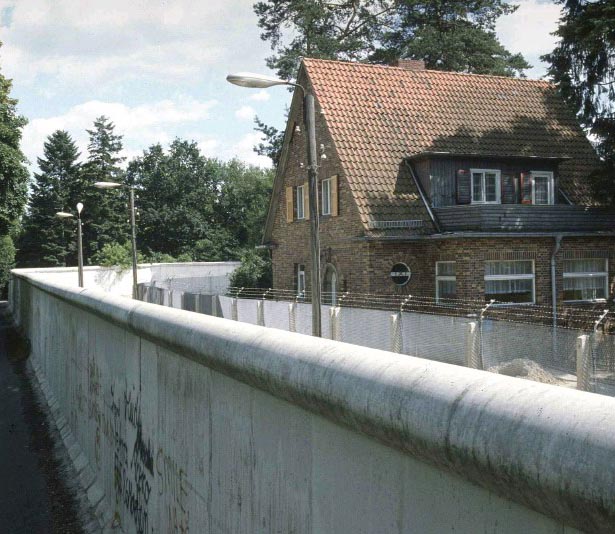Steinstücken: the curious 'island' of Liberty that was surrounded by communist Germany
The borders between countries usually give rise to curious cases in the form of enclaves, but what happens when that happens between two territories separated by a wall?
West Berlin had 12 exclaves in communist Germany
That is exactly what happened to various areas of West Berlin during the Cold War, as a result of the construction of the Berlin Wall in 1961. The western part of the city had a total of 12 exclaves located in communist Germany, and this one had one, Tiefwerder, in West Berlin. Most of these were uninhabited parcels of land that were transferred to the GDR over time, but there were three exceptions. On the one hand, Erlengrund and Fichtewiese were exclaves inhabited seasonally and to which the sentinels of communist Germany only allowed access to their residents and emergency vehicles. Steinstücken was the only one of those exclaves permanently inhabited by about 200 people.

Steinstücken: an exclave that Communist Germany tried to appropriate
Steinstücken was located in the southwestern corner of Berlin, next to the Steglitz-Zehlendorf neighborhood. It had an area of 12.67 hectares and was separated from the rest of West Berlin by a one kilometer long street. Its curious situation was established by dividing the city of Berlin into the different occupation zones (French, British, American and Soviet) at the end of World War II. In 1951, communist Germany tried to seize the exclave by force, sending its police and military,but the neighbors opposed it and the United States -whose occupation zone belonged to that exclave- reacted by sending its military to the area. From then on, life for the residents of Steinstücken became very complicated.

The construction of the Berlin Wall and the corridor
Communist Germany established two checkpoints in the access corridor to the exclave. For any of their activities, from going to school to going to work or doing the shopping, the residents of Steinstücken necessarily had to go through for those two controls. In 1961 things got even more complicated with the construction of the Berlin Wall, especially after 20 sentinels from the GDR deserted and fled to West Berlin through that exclave, taking advantage of the fact that it was only surrounding by barbed wire. The GDR reacted by erecting a wall around the perimeter of the exclave.

In September 1961 the Military Police of the US Army came to support the residents of the exclave with a helicopter and established a permanent detachment in Steinstücken, with a small helipad, in order to defend Freedom in that small territory (today a monument with two helicopter blades recalls that detachment in that neighborhood). Finally, in 1971 the four occupying powers agreed to build a corridor connecting Steinstücken with the rest of West Berlin one kilometer long and 20 meters wide, so that the residents of the exclave did not have to be subjected to constant controls. In return, free Germany gave Communist Germany six of its uninhabited exclaves, in addition to 4 million German marks.

The exclave ended up becoming a curiosity that attracted tourists
Steinstücken became quite a curiosity in West Berlin. The Wall completely surrounded this small neighborhood, even on both sides of the corridor, turning the exclave into a curious "island" of Liberty. This attracted many tourists and onlookers, eager to see what life was like in a neighborhood that had been totally surrounded by communist Germany. All this situation came to an end with the fall of communism in the GDR in 1989 and the Reunification of Germany in 1990. Today, Steinstücken is still an exclave of Berlin in the city of Potsdam. It belongs to the Wannsee district of Berlin and is home to about 300 people.
Here you can see a video of JanPBtest recorded in 1989 from the bus that connected Steinstücken with the rest of West Berlin, showing the aforementioned corridor surrounded by the Berlin Wall:
|
Don't miss the news and content that interest you. Receive the free daily newsletter in your email: Click here to subscribe |
- Lo más leído
- A British fairytale ruin: the abandoned shoe house on the Isle of Wight
- The interior of the Statue of Liberty torch and the sabotage that canceled its visits
- A virtual tour of ancient Rome in full color, just as it was in its heyday
- The supermassive black hole of Phoenix A, the biggest known light-devouring monster
- The unknown Soviet female cosmonaut who died on a mission: history or hoax?
- A large collection of Volkswagen cars hidden in an abandoned mine in Switzerland
- An old Soviet military plane abandoned from 1971 on a Russian island near Alaska

 ES
ES





Opina sobre esta entrada: